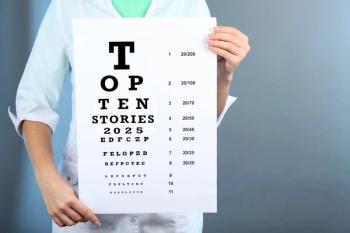
Non-flared tip aids dense cataract
Use of a Kelman non-flared phaco tip-when performing torsional phacoemulsification in eyes with dense cataracts-will minimize prolonged occlusion episodes, show study results.
TAKE HOME:
Use of a Kelman non-flared phaco tip-when performing torsional phacoemulsification in eyes with dense cataracts-will minimize prolonged occlusion episodes, show study results.
By Cheryl Guttman Krader; Reviewed by Christer Johansson, MD
Kalmar, Sweden-When performing torsional phacoemulsification (Infiniti Vision System with OZil handpiece, Alcon Laboratories) in eyes with dense cataracts, use of a Kelman flared phaco tip (Mini-Flared, Alcon) affords significantly better sculpting efficiency compared with a Kelman non-flared tip (0.9 Mini Tip, Alcon).
However, occlusion time during nuclear removal is significantly less using the non-flared tip, according to the results of a prospective controlled study conducted by Christer Johansson, MD.
“Both tips for torsional phacoemulsification work very well over the range of different nuclear densities,” said Dr. Johansson, Kalmar, Sweden. “However, the take-home message of my study is that the non-flared tip, which was designed to enhance performance with torsional phaco, is especially beneficial for rock-hard cases.”
“Whereas surgeons using a sculpting technique when operating on very hard nuclei can benefit from the better efficiency with the flared tip to sculpt and divide the nucleus, the non-flared tip will perform better during the removal phase in these cases,” Dr. Johansson said.
Non-flared versus flared tip
The clinical trial enrolled 26 patients with bilateral dense cataracts who had the first eye randomly assigned to phacoemulsification using either the newer, non-flared tip or the flared tip. Then, the fellow eye procedure was performed with the alternate tip.
Dr. Johansson performed all of the surgeries using the same modified stop-and-chop technique and machine settings.
Data from a frame-by-frame analysis were analyzed to determine four endpoints:
1. Cumulated dissipated energy (CDE) usage during the sculpting phase.
2. CDE during nuclear removal.
3. Time for nuclear removal.
4. Total occlusion time (measured as the number of video frames with occlusion in footpedal position 3 recalculated to seconds).
CDE during sculpting
The results showed mean CDE during sculpting was significantly lower using the flared tip than in the non-flared tip procedures, 3.73 versus 6.71.
“The cataracts in this series were relatively hard and it took some time to enter a large enough patient population with bilateral dense cataract determined to be similar density in the two eyes based on preoperative slit-lamp evaluation,” Dr. Johansson said. “In fact, mean nuclear density graded was 3.26 in the non-flared tip cases and 3.15 for eyes where the flared tip was used, and the difference between groups was not statistically significant.
The difference in cutting performance during sculpting is explained by the larger cutting edge of the tip with the flared design, Dr. Johansson added.
At the bevel, the non-flared tip measures 0.80 mm in its outer diameter with a lumen size of 0.57. The flared tip has an outer diameter of 0.91 mm at the bevel and inner diameter of 0.74 mm.
There were no significant differences between the non-flared and flared tips in mean CDE values for removal of nuclear material (7.13 versus 6.39) or removal time for nuclear material (54.99 versus 56.48 sec).
Mean total occlusion time was significantly lower in the non-flared tip procedures than in eyes operated on with the flared tip, 0.14 versus 1.68 sec.
Discussing the latter difference, Dr. Johansson explained that episodes of prolonged occlusion are more likely with the flared tip, because-compared with the non-flared tip- the flared tip narrows more distally and thus allows the accumulation of nuclear material.
“In this study, there was a tendency for the prolonged occlusion to occur more often when removing the second half of the nuclear material, and that difference was slightly greater in the procedures with the flared tip than with the non-flared tip,” Dr. Johansson said.
VIDEOOOOO
Christer Johansson, MD
Dr. Johansson is a consultant to Alcon Laboratories.
Newsletter
Don’t miss out—get Ophthalmology Times updates on the latest clinical advancements and expert interviews, straight to your inbox.





